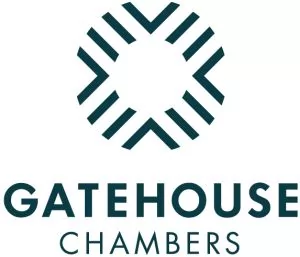- with Finance and Tax Executives
- with readers working within the Property and Construction & Engineering industries
There once was a time when you might turn up to an inquest with little or no pre-inquest disclosure. Over time this practice has generally been abolished (although some offenders remain!). At the more complex end of inquest work the scope and volume of documentary disclosure can be vast and it is certainly my experience that many courts simply cannot cope with the volume of documentation, with little resource to manage incoming documents.
On 13 September 2022, Chief Coroner Teague provided CCG number 44 on 'Disclosure'. The aim of the guidance is to advise and assist coroners on two matters. First, obtaining disclosure. Second, providing disclosure to properly interested persons at a timely stage. It all sounds a bit basic doesn't it, but trust me..... the guidance is welcomed and has plainly become necessary in the view of the Chief Coroner.
The key points commence with a reminder that the marshalling of evidence is a judicial function. This is a key point to ensure that such decisions remain with the Coroner and do not get taken over by one or more of the interested persons. The other key introductory points include:
- all evidence needs to be relevant, reasonable, sufficient and proportionate to the scope of the inquest.
- There should be clear dates for disclosure which should be monitored.
- All disclosure should be obtained by agreement but any non-compliance can be acted upon. Coronial power in this regard sits within Schedule 5 of the CJA 2009 (paragraph 1) which permits a Coroner to compel the production of evidence by way of written notice.
Example wording that coroners are advised to use when ordering disclosure is worthy of consideration to ensure that interested persons comply with disclosure obligations:
"I direct that:
- By XX date all interested persons having conducted reasonable and proportionate searches must assure the court in writing that all potentially relevant documents identified by their searches have been disclosed to me; and
- By XX date all interested persons must indicate with precision and in writing any suggested shortcomings in disclosure made to them (within the scope of the inquest)."
Arguably, this might open up the scope for issues being raised in writing about disclosure suspected to be lacking, but the advantage of such a direction is that it may reduce the number of late requests for more documents and alleged missing documents being left until the inquest itself.
Timing wise, disclosure is to be provided as soon as reasonably practicable in accordance with Rule 13 of the Coroner's (Inquests) Rules 2013 but reasonableness may be satisfied by the provision of a complete bundle as opposed to piecemeal disclosure as and when it arrives with the coroner.
The guidance stretches to PIR hearings also and that disclosure should be sufficient enough to allow any agenda to be addressed in an informed way. This is welcomed so that decisions about inquest management are not made in a vacuum and without any proper appreciation of the issues identifiable from the relevant documents.
There are some helpful passages regarding post-mortem reports but lastly I summarise some important points about medical records and finally redactions. Owing to the pressure on various courts impacting the ability to analyse and pare-down records, it is frequently the case that disclosure of medical records is more vast than it need be. Whilst in some cases it may be necessary for all medical records to be disclosed there is a risk of the recipient being overwhelmed and also for significant pages of irrelevant documents to be included. With this in mind, paragraph 24 of the guidance reminds Coroners that when exercising their judicial discretion, they may wish to limit disclosure to the relevant periods of healthcare within the scope of the inquest, and to place in the bundle only those records that will feature at the inquest. Where an Interested Person seeks wider disclosure than the coroner considers relevant to an inquest, it may be appropriate to refer them to the procedure pursuant to the Access to Health Records Act 1990.
Redactions are usually needed in multi-agency cases and it is recognised that this process places a significant burden on coroners and their teams. Such disclosure exercises can be lengthy and resource intensive. Care and time is needed to deal with any necessary redactions and significant care is to be exercised during this process to ensure that key information is not missed. This is a challenge for the service and the ability to provide a redaction service is almost non-existent in the courts I tend to appear in and in my experience a significant time and cost burden is being placed on public bodies to undertake this process. The potential need for Coroners to explore software packages and tools to assist in this process is highlighted in the guidance and it is suggested that coroners may wish to explore the options with their relevant local authority. Moreover, if an area is struggling, the Senior Coroner must raise this with the relevant Local Authority. If matters do not improve then the Senior Coroner should notify the Chief Coroner's Office providing full particulars about the difficulties and the attempts made to resolve them.
The content of this article is intended to provide a general guide to the subject matter. Specialist advice should be sought about your specific circumstances.


